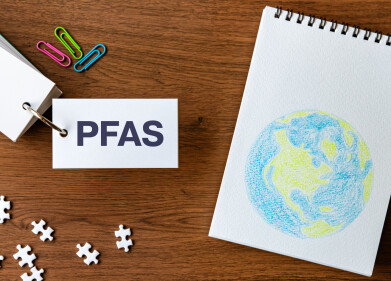HPLC, UHPLC
Chromatography Exposes Addicted Insects
Oct 17 2016
Drug addiction is a powerful trait in humans — taking drugs for a brief high followed by harmful consequences. Heroin, morphine and other painkilling drugs are highly addictive and their misuse undoubtedly causes damage to society as a whole. But while law makers, governments and others debate the best way to address the issue of illegal drugs in society — scientists and researchers continue to look at the ways drug addiction affects the brain.
Although studying human and other mammalian models are traditionally used to investigate additive behaviour — a team from The University of Scranton, Pennsylvania has demonstrated that ants can be addicted to drugs too. The team’s findings demonstrate that ants are the first invertebrates to self-administer drugs.
Similar societal animals — ants and people
In a paper published in the Journal of Experimental Biology the paper’s lead author, neuroscientist Marc Seid and his colleagues have shown that a social insect can become addicted to drugs. They hope that the work will help researchers to better understand how addiction affects society. Sied states in an article:
‘Now that we’ve proven we can addict ants and that the neurochemical pathways are similar to mammals, what’s most exciting to me is the next step. We can addict individual (ants) and see how that affects the ants’ social network, which is somewhat like humans’
Ants offer a big advantage over humans when it comes to studying drug addiction — the morals and ethics of deliberately getting humans addicted to drugs would immediately put a stop to the research. Traditionally, researchers have used rats to overcome this. Rats and humans are similar in some physiological responses to drugs — but are markedly different socially. But ants are socially similar to us — so the team realised that if ants become addicted to drugs they would make a good subject to study when investigating drug addiction in society.
Chromatography spots the signalling
The researchers first determined whether ants could become addicted to drugs. Two groups of ants were given bowls containing sugar-water, the concentration was lowered over a period of four days. But one group of ants had an additional component which didn’t get lowered — morphine. By day five the ants in the morphine group were visiting the feeders in much greater numbers than their water-only counterparts.
To check the addiction, the researchers introduced a new control group and gave the morphine group and the new group the choice between a sugar-only bowl or morphine-only bowl. The majority of the new control group went for sugar; the junkie ants went for morphine.
The team then used high performance chromatography to check the levels of dopamine in the ant’s brains. Compared to the control ants, the morphine addicts had higher levels of dopamine — a chemical associated with reward and pleasure in the brain. The use of HPLC to analyse neurotransmitters is discussed in the article, Chiral Amino Acid and Peptide Separations – the Next Generation.
So be careful what powder you use on those ants in the yard…
Events
Mar 18 2025 Beijing, China
Mar 25 2025 Paris, France
Mar 31 2025 Beijing, China
Apr 02 2025 Saigon, Vietnam
Apr 22 2025 Kintex, South Korea















